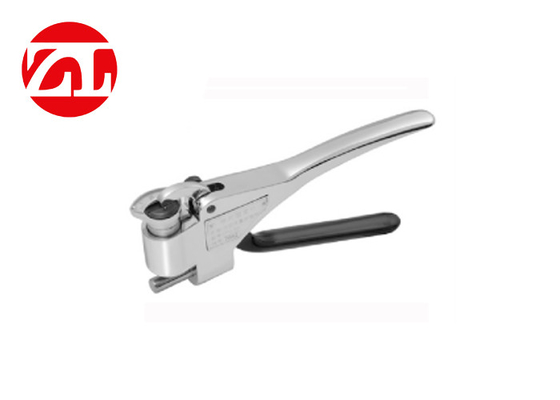Handheld Portable W-20 Webster Hardness Tester ,Aluminum Alloy Brass Stainless Steel Red Copper Tester
Description:
◆ Mainly used to test the hardness of aluminum alloy profiles, pipes, plates, aluminum workpieces and other soft metals.
◆ The indenter made of new material and new process has high hardness, long life and good interchangeability.
◆ High-strength pointer, not easy to bend and deform after long-term use or wrong operation.
◆ Forged material, upper handle with anodized surface, beautiful, wear-resistant and pollution-resistant.
◆ Adopt fine parts processing, precise whole machine assembly, and strict quality inspection.
◆ The full-scale point is stable, the calibration point is stable, and the pointer has no "crawling".
◆ The Webster hardness value can be converted into Vickers, Rockwell, Brinell and other hardness values, which is convenient for conversion.
◆ No sampling is required, and it does not require high operating skills. It is very suitable for rapid hardness testing of materials on the production site.
◆ It is a small portable instrument, small in size, light in weight, can be operated with one hand, and can test the hardness of materials quickly, conveniently and non-destructively.
◆ Comply with Chinese non-ferrous standard Y
Product Profile
An instrument that can quickly test the hardness of aluminum alloys on site. Easy to use, just one card, the hardness value can be read directly, with high efficiency and good reliability.
It is used to quickly test the hardness of aluminum alloy profiles, pipes, plates, aluminum workpieces and other soft metals. Ideal for quick, non-destructive piece-by-piece conformity inspection of batches at production, sales or construction sites.
The Webster hardness tester is the first choice for testing the mechanical properties of aluminum alloy profiles, which conforms to the Chinese non-ferrous standard YS/T420-2004 and the American standard ASTM B647-84 (2000).
Webster hardness tester can also be used to test copper, brass, mild steel, etc.
Performance characteristics:
1. Indenter :The indenter made of new material and new process has high hardness, long life and good interchangeability.
2. Pointer:The high-strength pointer is not easy to bend and deform after long-term use or wrong operation.
3. Window:Glass with better strength and toughness, the window is not easy to break.
4. Handle:Forged material, the upper handle with anodized surface is beautiful, wear-resistant and pollution-resistant.
5. Hardness block:The standard hardness block is tested by a standard hardness machine, and a test report is attached.
6. High quality :Fine parts processing, precise whole machine assembly, strict quality inspection.
7. Good stability: The full-scale point is stable, the calibration point is stable, and the pointer has no "crawling".
8. Convenient conversion:The Webster hardness value can be converted into Vickers, Rockwell, Brinell and other hardness values.
Technical parameters
Quantity: 0~20HW(equivalent to 20~110HRE)
Indication error: 0.5HW (5~17HW)
Repeatability error: 0.5HW (5~17HW)
Weight: 0.5kg
Application Instructions
1. W-20 type is often used in the production and application of aluminum profiles.
2. When the thickness of the aluminum profile is greater than 6mm, the W-20a type should be used instead.
3. W-20 type is used for aluminum pipes with inner diameter greater than 10mm.
4. W-20b type should be used for thin aluminum tubes with inner diameter greater than 6mm.
5. W-B75 is often used to test brass pipes.
6. W-BB75 is often used to test copper pipes.
7. W-B92 type is often used to test stainless steel strip or cold rolled steel strip.
Standard layout:A host, Webster hardness block, spare indenter, calibration wrench, small screwdriver, instrument case
Optional attachment:Pressing,Weiss hardness block,Correct the wrench,Table window glass

 Your message must be between 20-3,000 characters!
Your message must be between 20-3,000 characters! Please check your E-mail!
Please check your E-mail!  Your message must be between 20-3,000 characters!
Your message must be between 20-3,000 characters! Please check your E-mail!
Please check your E-mail! 




